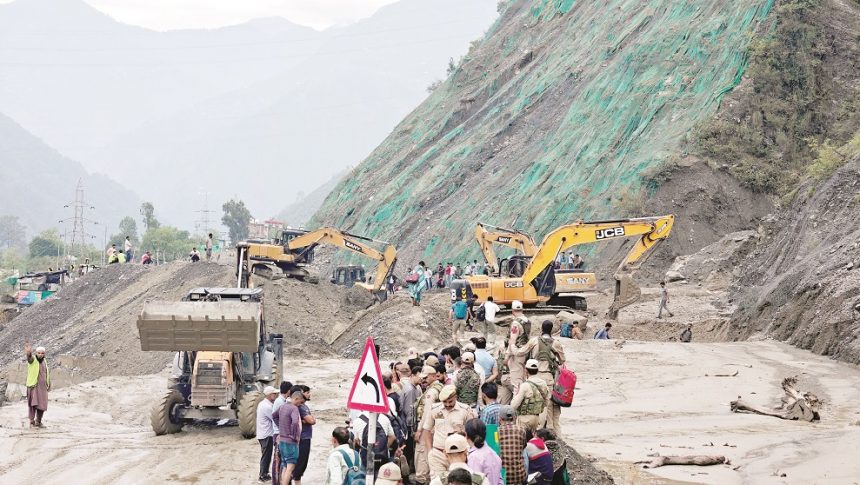Jammu and Kashmir is facing the mounting effects of climate change, with erratic weather patterns becoming the new norm. From snow-deficient winters to heatwaves, frequent cloudbursts, hailstorms, and flash floods, the region’s once-predictable climate is undergoing a dramatic transformation.
Over the past two months alone, the Kashmir Valley has witnessed multiple cloudbursts, leading to widespread destruction. One of the most devastating incidents occurred in the Ramban area along the Srinagar-Jammu National Highway, resulting in several fatalities and extensive damage to roads and infrastructure.
According to environmental experts, these extreme events are linked to rising temperatures and global climatic shifts. “A cloudburst forms rapidly when hot and cold air masses collide, leading to sudden, intense rainfall within a short span of time,” said Dr. Shakeel Ahmad Romshoo, Vice Chancellor of the Islamic University of Science and Technology and a leading environmental expert in J&K.
Dr. Romshoo added that Jammu & Kashmir’s mountainous topography makes it particularly vulnerable to such extreme weather events. “The Valley’s geography magnifies the impact of these abrupt weather changes,” he noted.
Data from the Meteorological Department indicates that between 2010 and 2022, J&K recorded approximately 168 extreme weather events, including cloudbursts and flash floods—figures that experts say are expected to rise.
Adding to the region’s climatic woes, temperatures in May 2025 broke seasonal records, triggering a heatwave even as the Valley battled flash floods in several districts. “We are witnessing temperature spikes at a rate higher than the global average, especially across the Himalayan region,” said Dr. Avinash Kumar, an environmentalist at the University of Jammu.
“The implications are serious,” he warned. “Climate variability is already taking a toll on Kashmir’s ecology. Prolonged dry spells, heavy unseasonal rain, and intense heat are threatening livelihoods, agriculture, and the region’s fragile environment.”
Dr. Romshoo, who has led extensive studies on glacial retreat and changing precipitation trends in Kashmir, said global warming has undeniably altered local weather cycles. “These irregular patterns—massive precipitation events, rising temperatures, and prolonged droughts—are all linked to the broader impacts of climate change,” he explained.
Experts agree that unless urgent mitigation and adaptation strategies are implemented, the frequency of cloudbursts and other extreme events will only increase. “Sudden avalanches, landslides, and cloudbursts are clear signs of a shifting climate,” Dr. Kumar said. “The region needs a robust climate resilience strategy to safeguard its people and environment.”
Kashmir grapples with record heat & devastating cloudbursts

Leave a Comment Leave a Comment







